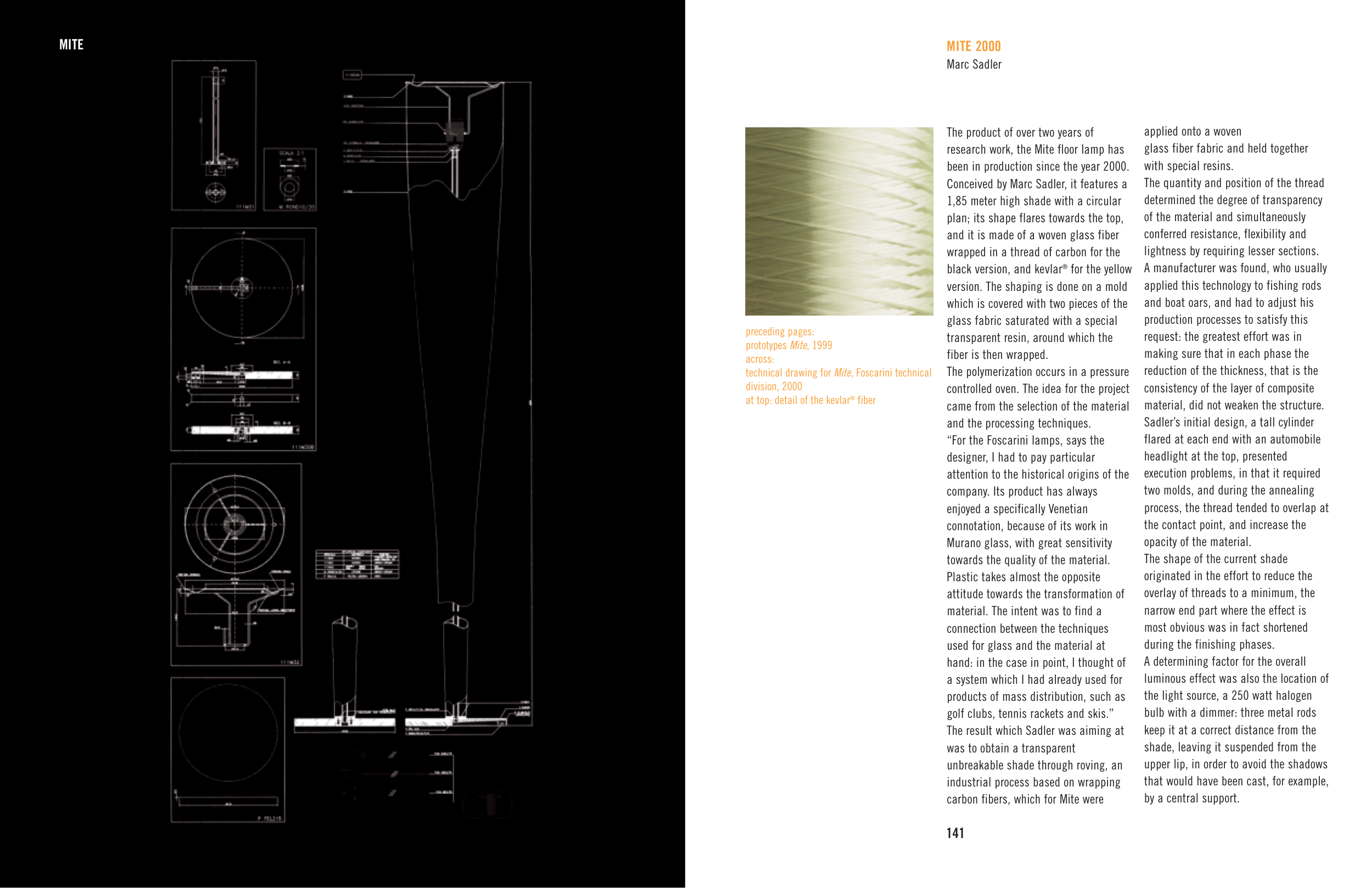141
MITE
MITE 2000
Marc Sadler
The product of over two years of
research work, the Mite floor lamp has
been in production since the year 2000.
Conceived by Marc Sadler, it features a
1,85 meter high shade with a circular
plan; its shape flares towards the top,
and it is made of a woven glass fiber
wrapped in a thread of carbon for the
black version, and kevlar® for the yellow
version. The shaping is done on a mold
which is covered with two pieces of the
glass fabric saturated with a special
transparent resin, around which the
fiber is then wrapped.
The polymerization occurs in a pressure
controlled oven. The idea for the project
came from the selection of the material
and the processing techniques.
“For the Foscarini lamps, says the
designer, I had to pay particular
attention to the historical origins of the
company. Its product has always
enjoyed a specifically Venetian
connotation, because of its work in
Murano glass, with great sensitivity
towards the quality of the material.
Plastic takes almost the opposite
attitude towards the transformation of
material. The intent was to find a
connection between the techniques
used for glass and the material at
hand: in the case in point, I thought of
a system which I had already used for
products of mass distribution, such as
golf clubs, tennis rackets and skis.”
The result which Sadler was aiming at
was to obtain a transparent
unbreakable shade through roving, an
industrial process based on wrapping
carbon fibers, which for Mite were
applied onto a woven
glass fiber fabric and held together
with special resins.
The quantity and position of the thread
determined the degree of transparency
of the material and simultaneously
conferred resistance, flexibility and
lightness by requiring lesser sections.
A manufacturer was found, who usually
applied this technology to fishing rods
and boat oars, and had to adjust his
production processes to satisfy this
request: the greatest effort was in
making sure that in each phase the
reduction of the thickness, that is the
consistency of the layer of composite
material, did not weaken the structure.
Sadler’s initial design, a tall cylinder
flared at each end with an automobile
headlight at the top, presented
execution problems, in that it required
two molds, and during the annealing
process, the thread tended to overlap at
the contact point, and increase the
opacity of the material.
The shape of the current shade
originated in the effort to reduce the
overlay of threads to a minimum, the
narrow end part where the effect is
most obvious was in fact shortened
during the finishing phases.
A determining factor for the overall
luminous effect was also the location of
the light source, a 250 watt halogen
bulb with a dimmer: three metal rods
keep it at a correct distance from the
shade, leaving it suspended from the
upper lip, in order to avoid the shadows
that would have been cast, for example,
by a central support.
preceding pages:
prototypes Mite, 1999
across:
technical drawing for Mite, Foscarini technical
division, 2000
at top: detail of the kevlar® fiber


